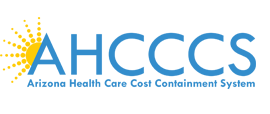
A new study finds that more than 35% of Canadian high school students admit to having been in a car with a driver who had been drinking, while 20% reported ever riding with a driver who had been using marijuana. “These numbers are concerning,” said study author Leia Minaker of the University of Waterloo. “A significant proportion of car-crash deaths are related to alcohol and drug impairment.”
The findings come from a national survey of almost 25,000 students, HealthDay reports. The survey found that 9% of students in 11th and 12th grade have driven within an hour of drinking. More than 9% have driven after having used marijuana. The findings are published in the Canadian Medical Association Journal Open.
How does this compare to local statistics? According to the 2016 Arizona Youth Survey (AYS), 18.6% of high school teens have ridden in a car with a drunk driver, 4.9% have driven while drunk and 9.1% have driven while using marijuana. The AYS is statewide survey of over 49,000 8th, 10th and 12th grade students.
It is so important to talk to your kids on a regular basis about the dangers of anyone driving while under the influence of alcohol and other drugs. Here are some tips to help in this conversation:
Steps for Preventing Your Teen From Becoming a Statistic
1. It’s important to prevent our kids from being under the influence of drugs or alcohol in the first place, even if they aren’t in a car. For our Arizona youth, the most common substances used to get high or that cause impairment are alcohol, prescription drugs (painkillers, stimulants and depressants) and marijuana. Not only do these substances contribute to poor decisions, but they also interfere with brain development. The good news is that a drug and alcohol prevention discussion can start with kids as young as five.
2. Discuss drugged and drunk driving dangers and potential consequences with your child so that they understand. Their decision to drive under the influence not only impacts their life, but also the lives of others in their car and on the road. Will their poor decision be worth receiving tickets or citations and potentially having a criminal record? Plus, if your child takes over-the-counter or prescribed medicine for a health issue, read the label together to learn more about potential drug interactions and side effects (including impact on driving), so that your child doesn’t unintentionally drive while impaired.
3. Include drugged and drunk driving components in your family policy and review with your family ahead of problem times (prom, spring break, etc.). Aside from laws about drug use and underage drinking, what are the consequences within your family if your teen is caught using drugs or alcohol? You can also periodically remind your teen that having their license and access to a car are earned privileges, not rights.
4. Have a rescue plan in place for your kids, in the event a risky situation comes up or a poor decision happens. Whether they’re impaired as the driver, or they are a passenger with a driver under the influence, make safety the primary focus and discipline second. The rescue plan can include a code word to use when calling an adult to help them leave the situation.
5. Set a good example as a parent. If your family policy indicates no drinking and driving, or not riding with a driver who is under the influence, set the same standards for adults and parents in the household. You’re the best example for your kids to follow.













